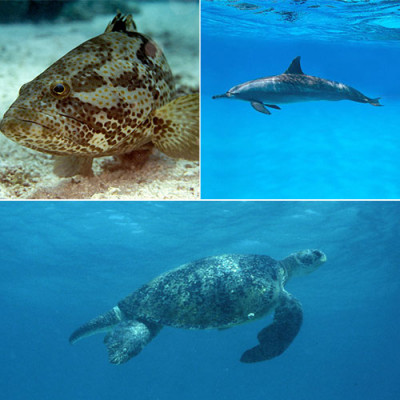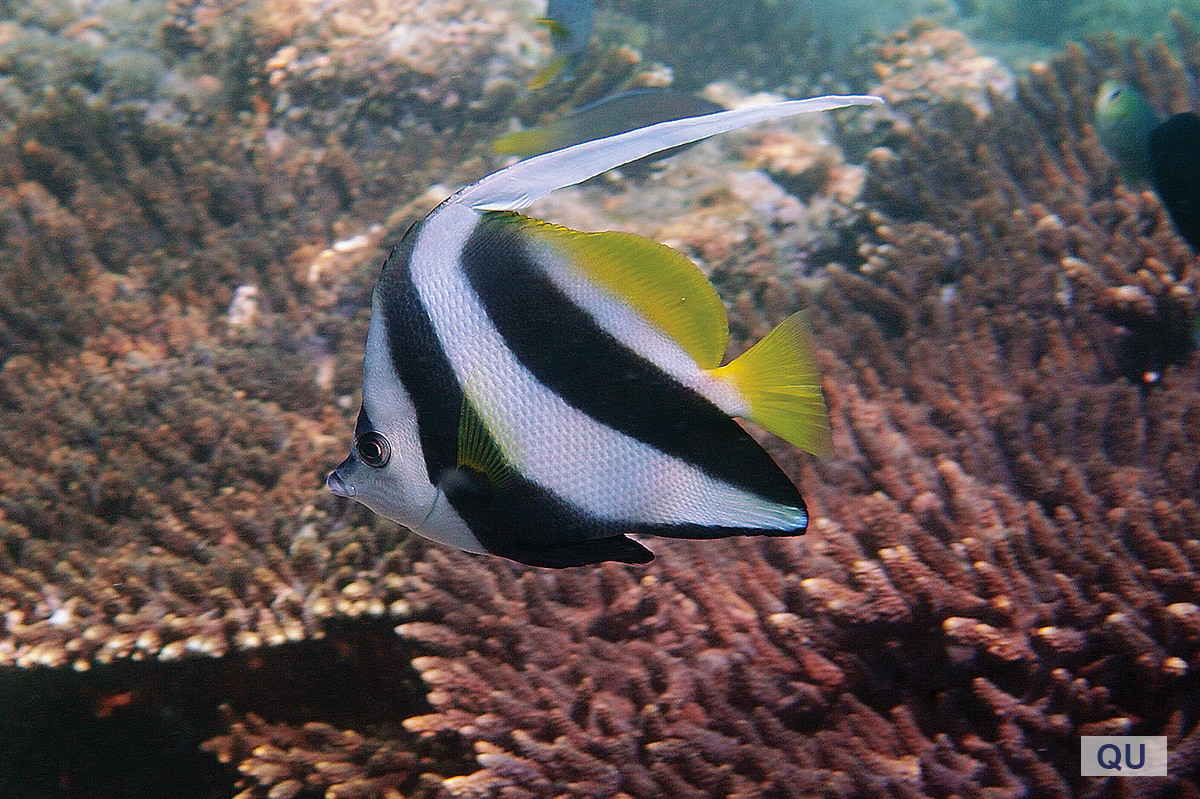Name: Longfin Bannerfish
Local name: Emadkarb
Scientific name: Heniochus acuminatus
Classification: Class: ray-finned fishes; Order: perch-likes; Family: butterflyfishes (Chaetodontidae)
Size: It reaches a total length of 20 cm.
Habitat:
The Longfin Bannerfish inhabits seaward coral areas, ranging in depth from 2 m to 75 m. It generally remains within a few meters of the reef and feeds on plankton. Juveniles are often solitary, while adults occur in pairs. Juveniles are known to sometimes pick on parasites on the epidermis of other fish. The species is oviparous, forming pairs during breeding.
Distribution:
This species is widely distributed throughout much of the tropical Indo-Pacific, ranging from the East African coast (but not the Red Sea) in the west, to the Society Islands in the east, north to Japan, and south to Australia.
Conservation status:
The IUCN Red List of Threatened Species classifies the Longfin Bannerfish as Least Concern (LC) in its global assessment, but Vulnerable (VU) in the regional assessment for the Arabian Gulf. The species is not targeted in fisheries, but important for the aquarium trade.
Description:
: The body is deep, ovate, and compressed with the dorsal fin forming a long filament, supported by an extremely elongate fourth dorsal spine. The mouth is small, pointed and terminal. The caudal fin is truncate or slightly rounded. The background color of the body is white with two diagonal large black bands. Beyond the second black stripe, the dorsal and caudal fins are yellow. The head is white, and the eyes linked to each dorsally other by a black band. The snout is white and spotted with black.








